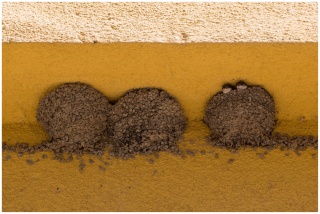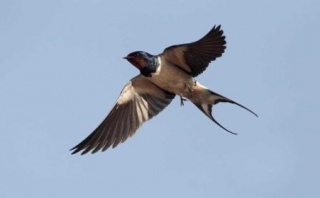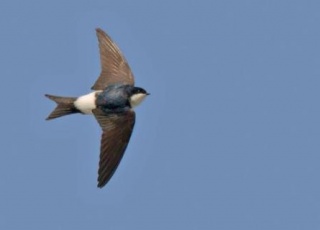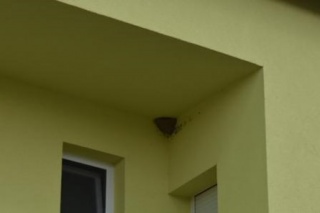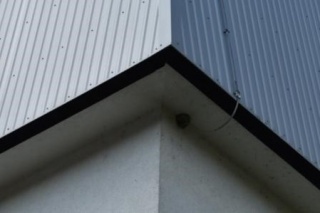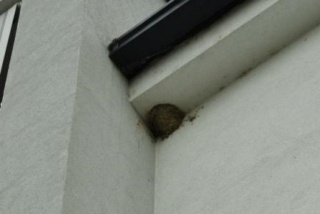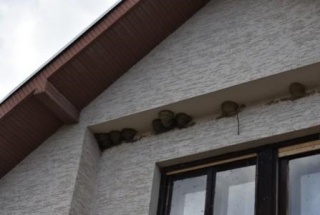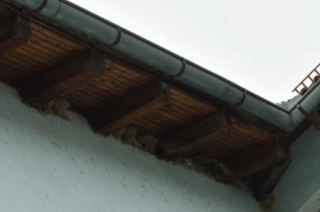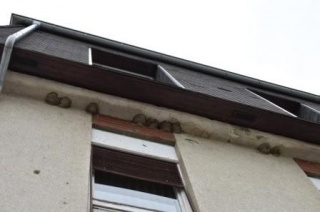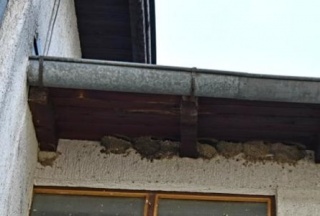Marketing
Counting of swallow and hucklebone nests in Slatina in the area of Josip Kozarac school
Every year around 5 billion birds – 187 species- moves from Europe to Asia and Africa and around 5 billion birds – 200 species- moves from northern to southern America
After they spend their winters there, birds come back North in spring to their nesting places where they begin a new cycle of nesting
Around 370 species of birds have been recorded so far in Croatia ot of which 240 are nesting birds
Out of 320 species of birds recorded in Croatia around half of them are migratory birds
Migration is one of the most important characteristics of birds and a factor of their diversity all around the world
Migration of birds is a challenge to the protection of nature because birds regularly move over large areas so the conditions on their path can influence a drop in number of nests
In Croatia the migration of birds is systemically recorded for over a hundred years
Croatia organized a ‘ringer activity’ (marking of the birds) in 1910 and by doing so it became the fifth country in Europe with a ringer central station
The aim for ringing of the birds is to follow their path which enables assessment and protection of their relocation and landing paths (source: Institute for ornithology of the Croatian Academia of Science and Art)
One of the ways of raising awareness is the continued watching of the birds and nests and by counting them
We decided to count the nests of the swallow and the hucklebone because their nests are the easiest to spot in urban areas out of all migratory birds
Swallow and hucklebone are migratory birds and the largest in numbers from the family of swallows (Hirundinidae) in Croatia
They are widespread across Europe and in Croatia they are among the most common birds
They are not the most endangered species but because of the drop in number of swallows in some european countries it is necessary to follow the conditions of their population around us
For their survival they need: - a good place to make their nests
- mud for making of the nests
- enough food (bugs, especially flies and mosquitoes)
Both species are nesting migratory birds that spend their winters in Africa south of Sahara and they come to Croatia in spring
They look very mch alike so people think they are the same
SWALOW (Hirundo rustica)
BACK: BLACK WITH STEEL BLUE REFLECTION
NECK AND FOREHEAD: DISTINCT MAROON COLOR
STOMACH: WHITE COLOR
TAIL: WHITE WITH FRECKLES WITH VERY LONG TAIL FEATHERS (FLAGS)
WINGS: LONG
FLIGHT: SWIFT AND ELEGANT THANKS TO LONG WINGS AND DEEPLY BIFURCATED TAIL
HUNT: IT HUNTS BUGS DURING FLIGHT MOSTLY CLOSER TO THE GROUND
NEST:
BOWL-LIKE SHAPE, MADE OUT OF MUD AND STEMS OF PLANTS
THE FEMALE LAYS 4-5 EGGS THAT SHE SITS ON FOR 16 DAYS AND THE YOUUNG ARE FED BY THE MALE AND THE FEMALE FOR 24 DAYS
NESTS: IN THE VILLAGES ON TOP OF BEAMS IN STABLES, UNDER BRIDGES AT THE EDGE OF SOME TOWNS AND IN CITIES UNDER EAVES OF SOME HOUSES AND BUILDINGS
HACKLE ( Delichon urbica)
BACK: BLACK WITH BLUE REFLECTION
STOMACH: PRELY WHITE COLOR
TAIL: NOT AS BIFRCATED AS THE SWALLOW’S AND IT DOESN’T HAVE THE LONG FLAGS LIKE THE SWALLOW
IN FLIGHT: QUITE OBVIOUS WHITE TRICY
HUNT: IT HUNTS BUGS DURING FLIGHT AT HIGHER ALTITUDES
NEST
CLOSED BALL SHAPED WITH NARROW CIRCULAR ENTRANCE, MADE OUT OF MUD AND STEM OF PLANTS
THE FEMALE LAYS 4-5 EGGS WHICH BOTH THE MALE AND THE FEMALE TAKE CARE OF FOR 14 DAYS AND THE YOUNG ARE TAKEN CARE OF BY BOTH PARENTS UP TO 22 DAYS
NESTING: COLONIALLY
NESTS: LARGER IN NUMBERS IN TOWNS THAN IN VILLAGES, ON FACADES OF BUILDINGS AND UNDER SHELTERS
FIELD WORK
FOR EVERY OBSERVATION WE RECORDED: - TYPE OF SPECIES (SWALLOW OR HuCKLEBONE)
- ADRESS OF LOCATION
- NUMBER OF NESTS AT THE VIEWED OBJECT
- LOCATION OF THE NEST RECORDED BY USING PHOTO CAMERA AND MOBILE PHONE
Observation ways: by the naked eye and binoculars
SWALOW NESTS
HACKLE NESTS
RESULT ANALYSIS
INCLUDES WORK IN SCHOOL: unification of the obtained data / making of a table which will show the results of conting the birds in the streets - : (o - 14 ) I (O – 50 ) freqency display of the swallow and hucklebone nests on the geographical map of slatina (area of josip kozarac school) according to streets: (0-14 ) and (0-50 ) - /percentage representation of both species according to location where both species are the most common
Location of swallow and hucklebone nests according to streets in Slatina
CONCLUSION
After our research was done, we noticed:
NUMERICAL RELATIONSHIP OF THE TWO SPECIES IS COMPLETELY CONFORMING TO HABITAT CUSTOMIZATIONS TO WHICH THEY BELONG (SWALLOWS ARE MOSTLY IN RURAL AREAS AND HUCKLEBONE IS MOSTLY IN URBAN AREAS) SO THE NUMBER OF HUCKLEBONES IN SLATINA IS LARGER THAN THE NUMBER OF SWALLOWS
IN ORDER TO FIND OUT TO WHICH EXTENT DO THE HUMANS AFFECT THE NUMBER OF SWALLOWS AND HUCKLEBONES IT IS NECESSARY TO OBSERVE AND COUNT THE NUMBER OF THEIR NESTS THROUGH SEVERAL SPRINGS
THE IMPORTANCE OF SAVING MIGRATORY BIRDS ON A GLOBAL LEVEL IS POSSIBLE ONLY WITH THE COOPERATION OF PEOPLE AND INSTITUTIONS INVOLVED IN THIS ACTIVITY
ONE OF THE MAIN AIMS IS RAISING AWARENESS ABOUT THE CHALLENGES WITH WHICH THE BIRDS MEET DURING THEIR MIGRATIONS ON THE THREE MAIN MIGRATION PATHS: AFRICAN-EUROASIAN, EASTERNASIAN- AUSTRALIAN-ASIAN AND AMERICAN.
MIGRATORY TRAVELS THROUGH WHICH THE MIGRATORY BIRDS GO EVERY YEAR IS AMAZING! WHY? BECAUSE THEY CONFRONT STORMS, WAR AFFECTED AREAS, POACHING, WIRES OF POWERLINES, PROPELERS OF WIND POWER PLANTS AND DESTRUCTION OF RESTING PLACES AND YET, THEY STILL DON’T GIVE UP!
MIGRATORY BIRDS DO NOT CARE ABOUT STATE BORDERS! OR THE DISTANCE BETWEEN CONTINENTS!
THERE IS A DEEP RELATIONSHIP BETWEEN HUMANS AND BIRDS!
IT IS A RELATIONSHIP BETWEEN HUMANS AND THE BIGGEST EVOLUTIONARY INSTINCT – INSTINCT FOR FREEDOM!
SO, WHAT ARE WE WAITING FOR? LET’S SPREAD OUR ‘WINGS’!
Post je objavljen 22.09.2018. u 13:20 sati.
